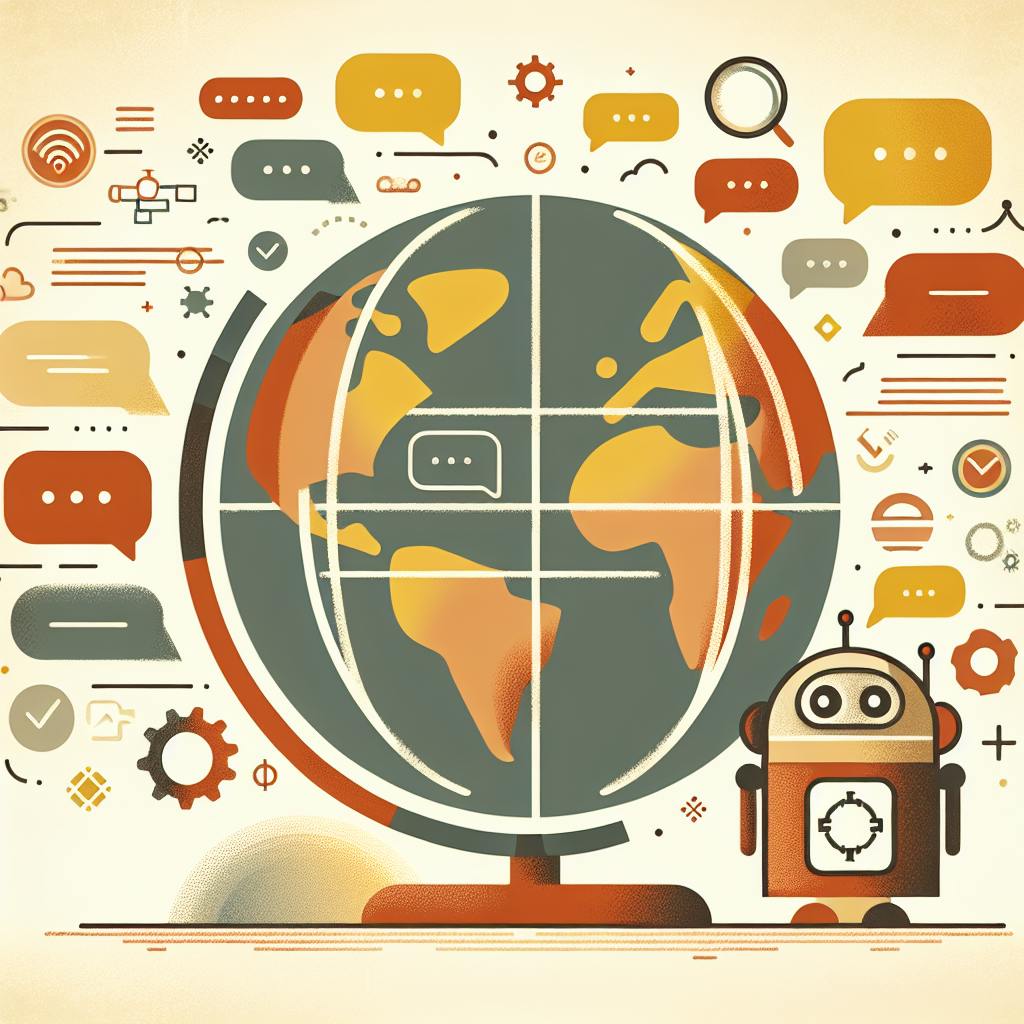Deploying chatbots across the right communication channels is crucial for enhancing customer engagement and satisfaction. Here are the key steps to prioritize chatbot deployment channels effectively:
-
Know Your Audience: Study customer habits and preferred channels to understand where they are most active. Assess channel reach to identify platforms with the highest potential engagement.
-
Define Chatbot Goals: Set clear objectives aligned with business goals and customer needs. Determine the primary functions and capabilities required for your chatbot to meet expectations.
-
Evaluate Channel Limits: Understand the technical limitations and design requirements for each channel to ensure a seamless user experience across platforms.
-
Plan Resources: Calculate the costs involved, including development, integration, maintenance, and personnel expenses. Assemble a team with the necessary expertise to manage deployment and ongoing support.
-
Prioritize Channels: Evaluate the potential business impact of each channel, plan a phased rollout, and continuously monitor and refine chatbot performance using data analytics.
By following these steps, businesses can create a customer-centric chatbot strategy that drives engagement, loyalty, and revenue growth.
Related video from YouTube
Quick Comparison: Chatbot Deployment Channels
| Channel | Audience | Technical Limitations | Design Requirements |
|---|---|---|---|
| Social Media | Millennials | Message frequency, file types | Concise, conversational |
| Messaging Apps | Millennials | Character limits | Mobile-optimized |
| Web Chat | Other age groups | Browser compatibility | Desktop-optimized |
By understanding audience preferences, technical constraints, and design considerations, businesses can effectively prioritize chatbot deployment channels to maximize customer engagement and satisfaction.
Step 1: Know Your Audience
To deploy chatbots effectively, you need to understand your target audience. This step involves analyzing customer demographics, behaviors, and preferred communication platforms to determine the most effective channels for chatbot engagement.
Study Customer Habits
Understand Your Customers' Preferences
| Demographic | Preferred Channel |
|---|---|
| Millennials | Social media and messaging apps |
| Other age groups | Web-based chat or other platforms |
Evaluating customer data helps you identify the most suitable channels to reach your audience. For instance, if your target audience is millennials, you may want to focus on social media and messaging apps.
Assess Channel Reach
Channel Reach and Suitability
| Channel | Reach | Suitability |
|---|---|---|
| Social media | High | Suitable for millennials |
| Messaging apps | High | Suitable for millennials |
| Web-based chat | Medium | Suitable for other age groups |
Review the reach and suitability of potential channels to align with audience preferences. By assessing channel reach, you can determine which platforms will provide the most effective engagement with your target audience.
By understanding your audience's needs and preferences, you can develop a strategic approach to deploying your chatbots across various platforms, ensuring effective engagement and customer satisfaction.
Step 2: Define Chatbot Goals
Set Clear Objectives
To ensure your chatbot's success, define its primary functions and objectives. This will guide development and deployment, aligning with your business goals and meeting customer expectations.
Objective-Setting Questions
- What tasks do I want my chatbot to perform?
- What key performance indicators (KPIs) will I measure?
- How will I measure my chatbot's success?
Match Customer Needs
Align your chatbot's capabilities with customer expectations and requirements for a seamless user experience.
Customer Needs Assessment
| Customer Need | Chatbot Capability |
|---|---|
| Common inquiries | Provide quick answers |
| Pain points | Offer efficient solutions |
| Preferred channels | Engage through their preferred platforms |
By setting clear objectives and understanding customer needs, you can develop a chatbot that effectively addresses customer concerns, provides valuable support, and enhances the overall customer experience.
Step 3: Evaluate Channel Limits
Understand Technical Limits
When evaluating channel limits, consider the technical capabilities of each platform. This includes analyzing API integrations, feature support, and potential compatibility issues with your chatbot technology.
Technical Limitations
| Platform | Technical Limitations |
|---|---|
| Messaging platforms | Restrictions on file types, message frequency, and character limits |
| Web-based chat | Limited by website functionality and browser compatibility |
Understanding these technical limitations helps you determine which channels are best suited for your chatbot and ensures a seamless user experience.
Design for User Experience
In addition to technical limitations, consider the user interface and interaction design requirements for each channel. This includes designing a consistent and intuitive chatbot experience that aligns with the unique characteristics of each platform.
Design Considerations
| Platform | Design Requirements |
|---|---|
| Messaging platforms | Concise and conversational tone, optimized for mobile devices |
| Web-based chat | Detailed and informative approach, optimized for desktop devices |
By designing with the user experience in mind, you can create a chatbot that effectively engages with customers and provides a positive experience across multiple channels.
By evaluating both technical and user experience limitations, you can develop a chatbot that effectively addresses customer needs and provides a seamless experience across multiple platforms.
sbb-itb-b2c5cf4
Step 4: Plan Resources
Calculate Costs
To deploy chatbots across multiple channels, you need to estimate the financial resources required for setup and ongoing operation. The cost of maintaining a chatbot can range from 15-20% of the overall development cost.
Cost Breakdown
| Cost Type | Description |
|---|---|
| Development costs | Initial investment in designing and building the chatbot |
| Integration costs | Cost of integrating the chatbot with existing systems and platforms |
| Maintenance costs | Ongoing costs for updates, support, and training |
| Personnel costs | Cost of hiring and training personnel to manage and maintain the chatbot |
Assess Personnel Needs
In addition to financial resources, you need to determine the personnel required to manage chatbot deployment and provide continuous support and upgrades. Assemble a team with the necessary expertise and support across all levels of your organization.
Team Roles
| Role | Responsibilities |
|---|---|
| Executive sponsor | Champion the project and remove roadblocks |
| Project manager | Oversee the project, set timelines, and ensure the project stays on track |
| Technical team | Design and implement the chatbot, integrate with existing systems, and test and debug |
| Domain experts | Provide in-depth knowledge of the specific area the chatbot will focus on |
| Chatbot vendor | Provide technical support, training, and ongoing maintenance |
By calculating costs and assessing personnel needs, you can ensure a successful chatbot deployment that meets your business goals and provides a positive experience for your customers.
Step 5: Prioritize Channels
This final step involves consolidating information from the previous steps to make informed decisions on which channels to prioritize for chatbot deployment.
Evaluate Business Impact
Consider the potential impact of chatbot deployment on each channel against overarching business objectives to prioritize effectively. Ask yourself:
- Which channels have the highest customer engagement rates?
- Which channels have the highest conversion rates for desired actions (e.g., sales, sign-ups, etc.)?
- Which channels can benefit from automation, reducing operational costs?
Plan a Phased Rollout
Create a phased approach for rolling out chatbots, beginning with high-priority channels and expanding based on success and feedback. This will help:
| Benefit | Description |
|---|---|
| Mitigate risk | Focus on a single channel to test and refine the chatbot before expanding to others. |
| Optimize resources | Allocate resources efficiently, prioritizing channels with the highest potential impact. |
| Gather feedback | Collect user feedback and iterate on the chatbot to improve its performance and user experience. |
Monitor and Refine
Use data analytics to continuously refine chatbot performance and user experience across all deployed channels. Track key metrics such as:
| Metric | Description |
|---|---|
| User engagement | Track user interactions, sentiment, and feedback to identify areas for improvement. |
| Conversion rates | Analyze the effectiveness of chatbot-driven conversions and optimize accordingly. |
| Error rates | Identify and address technical issues to ensure seamless user experiences. |
By prioritizing channels effectively, you can maximize the impact of your chatbot deployment and drive business success.
Chatbots for Customer Engagement
Chatbots have transformed customer engagement by providing instant support, personalized experiences, and seamless interactions across various channels. To stay competitive and meet evolving customer preferences, businesses need to deploy chatbots strategically. By prioritizing channels effectively, businesses can maximize the impact of their chatbot deployment and drive business success.
Recap: 5 Steps to Prioritize Chatbot Deployment Channels
Here's a summary of the five steps to prioritize chatbot deployment channels:
| Step | Description |
|---|---|
| 1. Know your audience | Study customer habits and assess channel reach to understand where your customers are most active. |
| 2. Define chatbot goals | Set clear objectives and match customer needs to ensure your chatbot is designed to meet their expectations. |
| 3. Evaluate channel limits | Understand technical limitations and design for user experience to ensure a seamless interaction. |
| 4. Plan resources | Calculate costs and assess personnel needs to ensure effective deployment and maintenance. |
| 5. Prioritize channels | Evaluate business impact, plan a phased rollout, and monitor and refine chatbot performance to maximize ROI. |
By following these steps, businesses can create a customer-centric chatbot strategy that drives engagement, loyalty, and ultimately, revenue growth. As customer preferences and technological advancements continue to evolve, it's essential for businesses to stay flexible and adjust their chatbot deployment strategies accordingly.
FAQs
Which communication channels do chatbots support?
Chatbots can be deployed on various communication channels to provide customer support and engagement. Here are some examples:
| Channel | Description |
|---|---|
| Web channel | Embed a customizable, real-time messaging platform on your website. |
| WhatsApp Business | Leverage WhatsApp's massive user base to provide customer support and engage with customers. |
| Facebook Messenger | Utilize Facebook's popular messaging platform to offer customer support and promote your brand. |
| Twilio SMS | Integrate Twilio's SMS capabilities to provide text-based customer support and notifications. |
| LiveChat | Offer real-time customer support and chat with customers on your website. |
| SMS | Provide customer support and send notifications via SMS. |
| Use chatbots to automate email responses and provide customer support. | |
| Social media | Deploy chatbots on social media platforms like Twitter, Instagram, and LinkedIn to engage with customers and provide support. |
| Messaging apps | Integrate chatbots with messaging apps like Slack, Discord, and Telegram to offer customer support and engage with customers. |
| Voice assistants | Use chatbots with voice assistants like Alexa, Google Assistant, and Siri to provide customer support and engage with customers. |
By deploying chatbots on multiple channels, businesses can provide omnichannel customer support and engagement.

